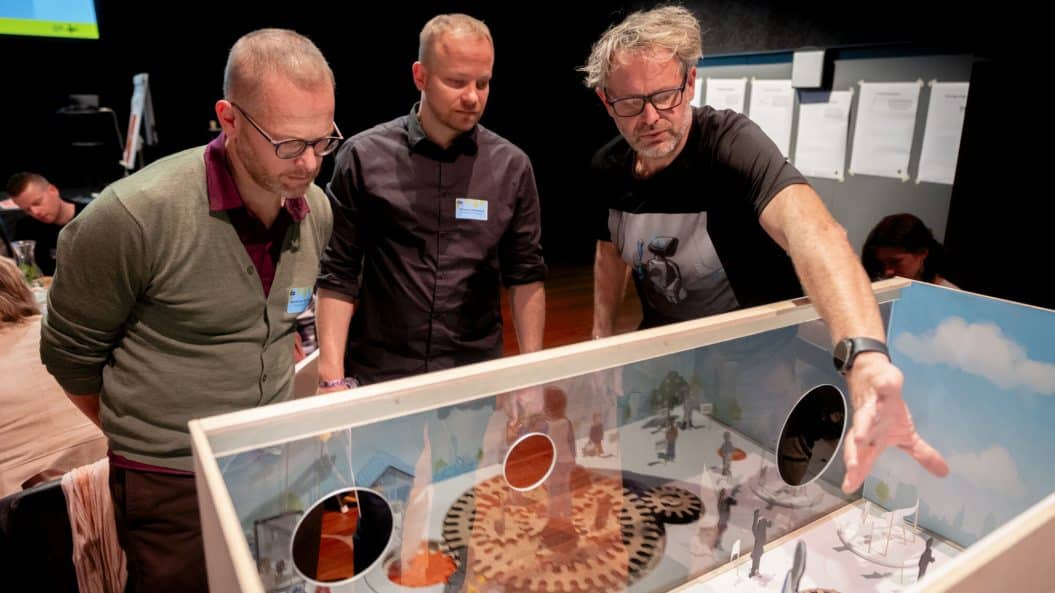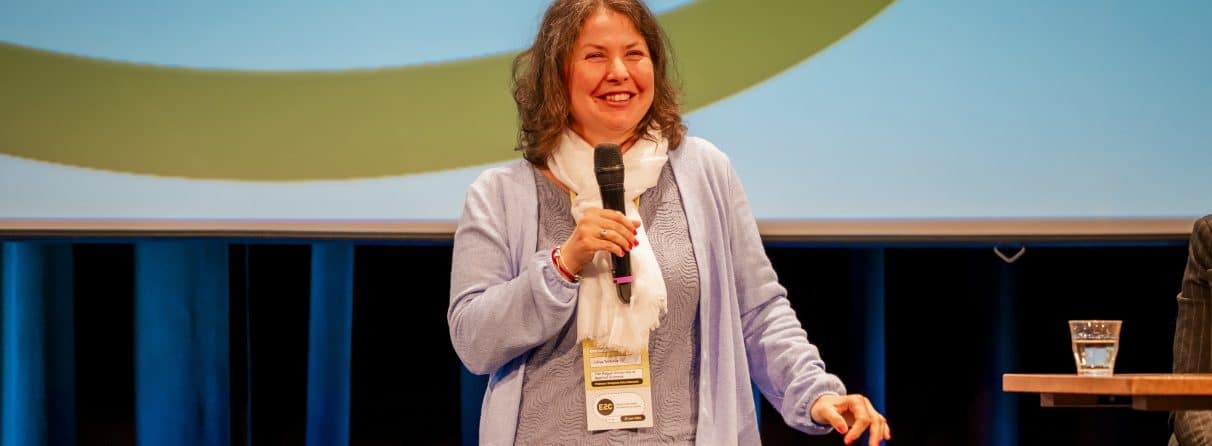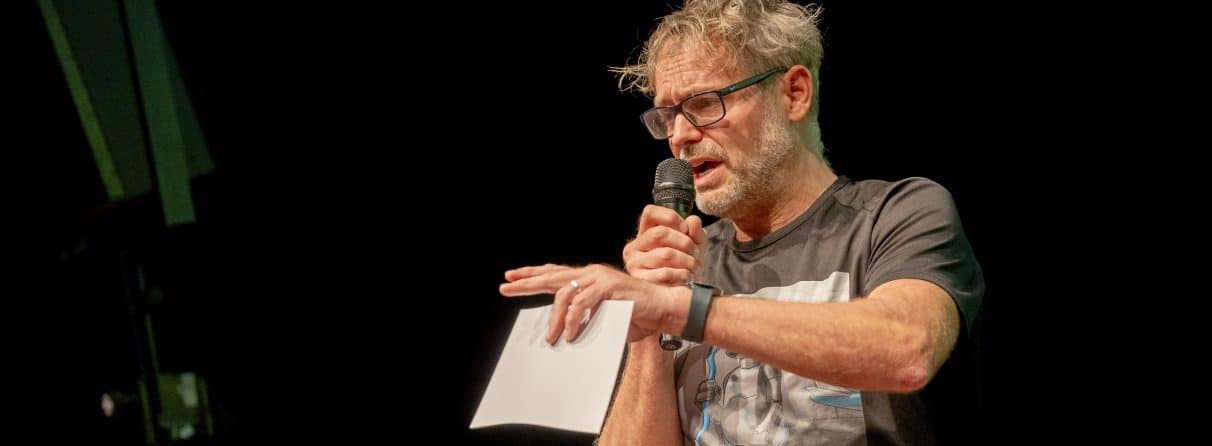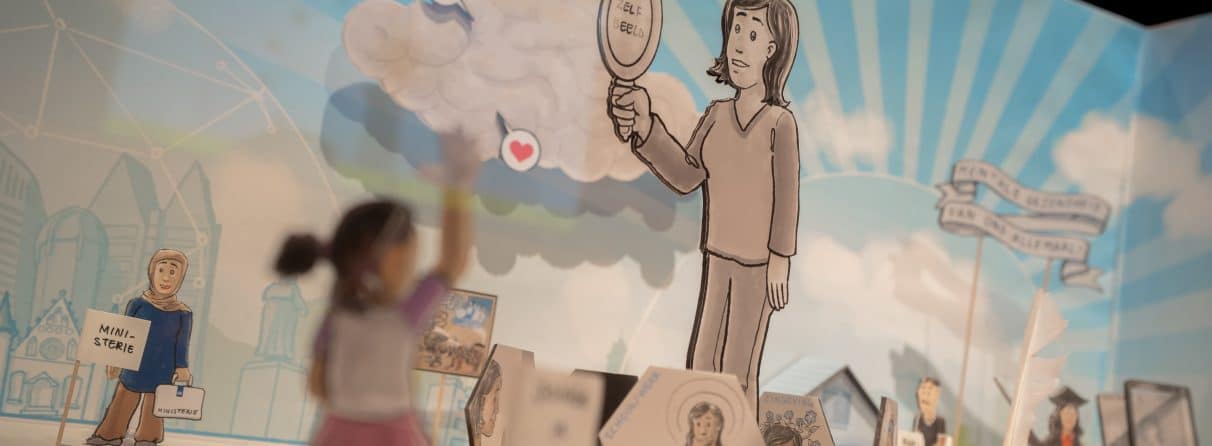Liliya Terzieva is Professor of Designing Value Networks at The Hague University of Applied Sciences. On 2 April 2024, she delivered her inaugural lecture ‘Collaborative futures: navigating value networks for lasting impact’. The same day, the book ‘Tackling social transitions together’ about transition management and developing networks, which she wrote together with Katinka Bergema and Christine De Lille, was launched.
Jochem Galama is a designer and visual design thinker and a practical partner affiliated with ESC. His company Contour Industrial Design Solutions has it’s 25th anniversary this year.
The big leap that the Expertise Network Systemic Co-Design has made in the third year of its existence is that it has succeeded in making the invisible knowledge visible and tangible. This happened during the discovery expedition that professor Liliya Terzieva and designer Jochem Galama embarked upon together, in a quest on how to translate ‘the operation of systems’ into a knowledge product that can be applicable in practice.
“You can touch it, it exists physically, and thus you can immediately interact with it. Jochem designed that fantastically,” says Liliya. The collaboration not only resulted in an engaging and appealing mechanical model, but also brought something else: “I now perceive the value of collaborating and co-creating with the practical partners even better. The search with Jochem has lifted my understanding of how Systemic Co-Design works in practice to a new level,” says Liliya.
Jochem, tell us. How do you make a professor so enthusiastic?
Jochem: “Liliya’s scientific research and my designs deal with the same subject: how does a system work and how can you realize further improvements through joint interventions? My mechanical twin helps discover what your view is on a situation, what you feel and experience in it and how you can convey that. All stakeholders are given both a voice and a role in the process.”
Liliya: “That fits so well with our research, in which we look at multistakeholder interactions and where we have to deal with uncertainties and complexity.”
Why did you participate in the ESCall scheme?
Jochem: “The ESCall gave me the opportunity to explore a conceptual idea for a systemic intervention. ESC paired me with Liliya.”
What experience do you bring?
Jochem: “I guide my clients in providing insight into layered, multi-stakeholder issues such as innovation, strategy, change processes or tenders. No matter how different the organizations are, I see many similarities in their problems: people have a limited perspective, which means that the view of the entire system is lacking. As a result, managers do not oversee the effects of a decision. One of my clients is KLM. With the use of visual designs, I have helped KLM to improve communication and processes between the departments and layers in the organization.”
Liliya: “A good example of an organization where the systemic problems were invisible. It shows how important it is to be able to observe the entire system, to make visible what specific role each plays in it and what impact that has on others.”
How did you translate the abstract theory into practice?
Liliya: “Jochem has designed a model that makes the relationships in systems and the dynamics in systems visible. It is a visual representation of the system, from a holistic view. It shows the emergence of other subsystems and it creates awareness of the impact they have on each other.”
What you have created looks like a 3D model. How does it work?
Jochem: “It is a ‘mechanical systemic twin’. We don’t call it a 3D model, but a 4D model, because you not only see the systemic environment and the players in it, but also a fourth dimension: movement. I designed that with gears: when you turn a cog, the whole system starts moving. You can feel the play of forces. You can see that the elements have to fit together despite their different shapes. At the same time, you also see that space is needed for the elements to be able to move. The model helps to discover where there is room for improvement and to discuss that.”
Liliya: “That’s how it works in collaboration between people. A small action by an employee affects the system. You can make interventions at all levels. This insight helps to arrive at a more democratic approach to transitions. Empower the people!”
What was the most special thing about your collaboration?
Jochem: “The word that first comes to mind is ‘co-reflection’: reflecting together within a situation, what others see in it, what it does or could do for you. That’s the main value I got from my conversations with Liliya. Liliya’s reaction to my mechanical twin revealed other values of it, which in turn evoked new reactions from my side. It’s exactly what I want to achieve with the model. A kind of Droste effect.”
Liliya: “That made it really valuable to me. The instrument helps to test the theory in practice, to talk about it and to learn from it. Do we have a good picture of the principles of the systemic? Does what we expect happen in reality? The search with Jochem has lifted my understanding to a new level of approaching the Systemic Co-Design approach in practice.”
Is the model already available?
Jochem: “Certainly. In October I presented the prototype during the Dutch Design Week. That was fun: there was a big audience and I learned to tell the story better and better. I noticed that the visitors recognized a lot in it. There is a need for a mechanical twin. I’m now designing a set of guiding visual methods for different situations.”
Liliya: “An ESC publication with all the results of the ESCalls will also be published in early 2025.”
What’s on the agenda for 2025?
Liliya: “This year I focus on the transitions in the food industry and in education. I will use the model to make visible the power of the human factor in these sectors.”
Jochem: “I look forward to using the model with new clients and enriching it with other functionalities.”
Liliya: “The ESCall has been completed, but our collaboration is just starting.”
Text by: Helen Jochems, MbH communicatie



